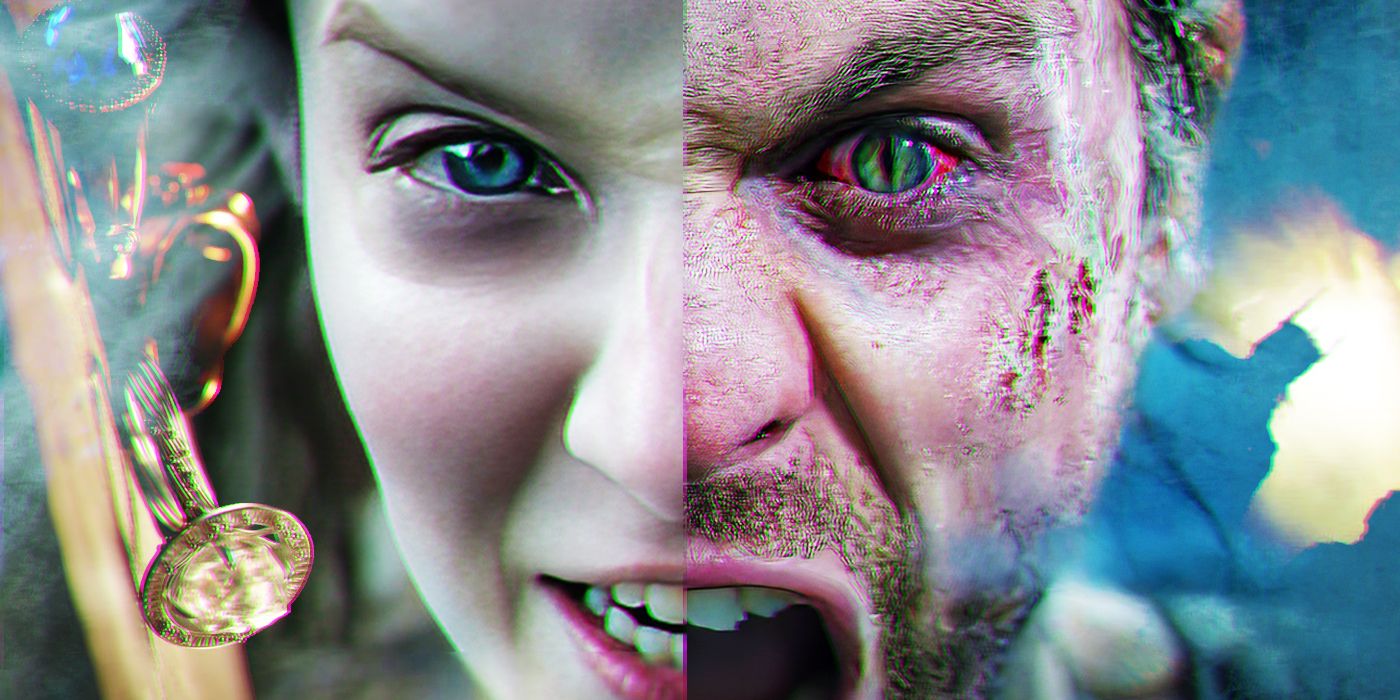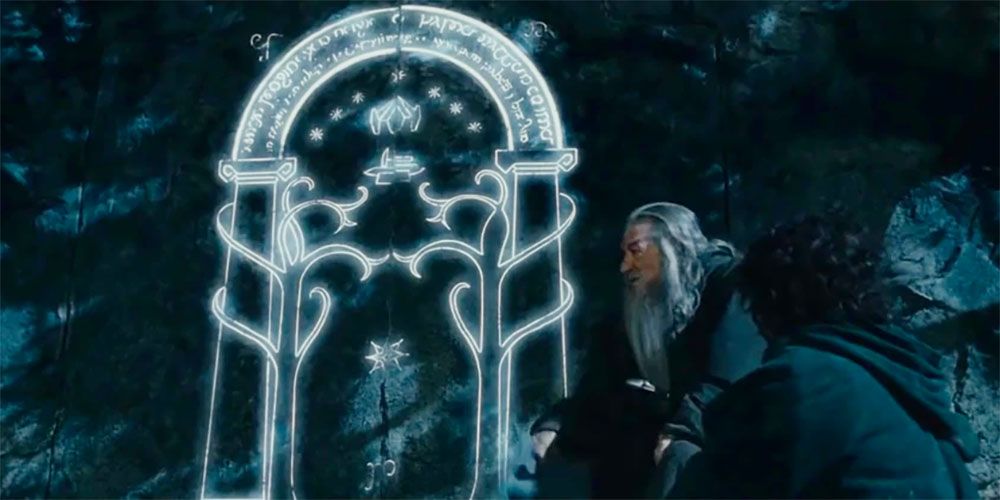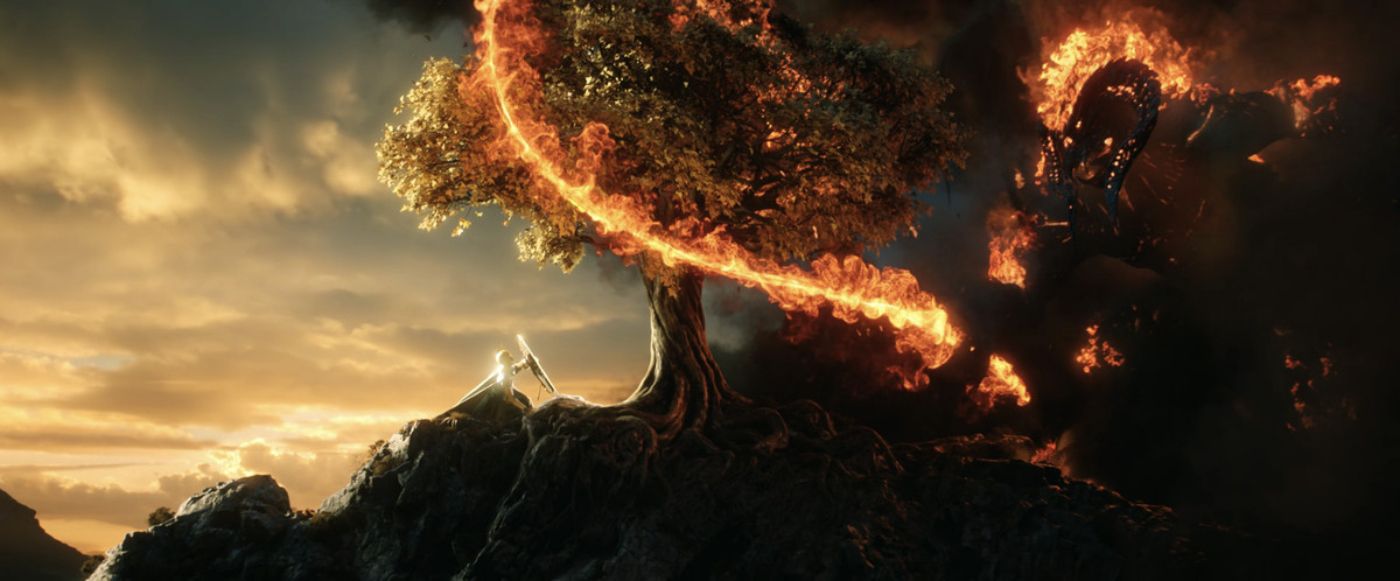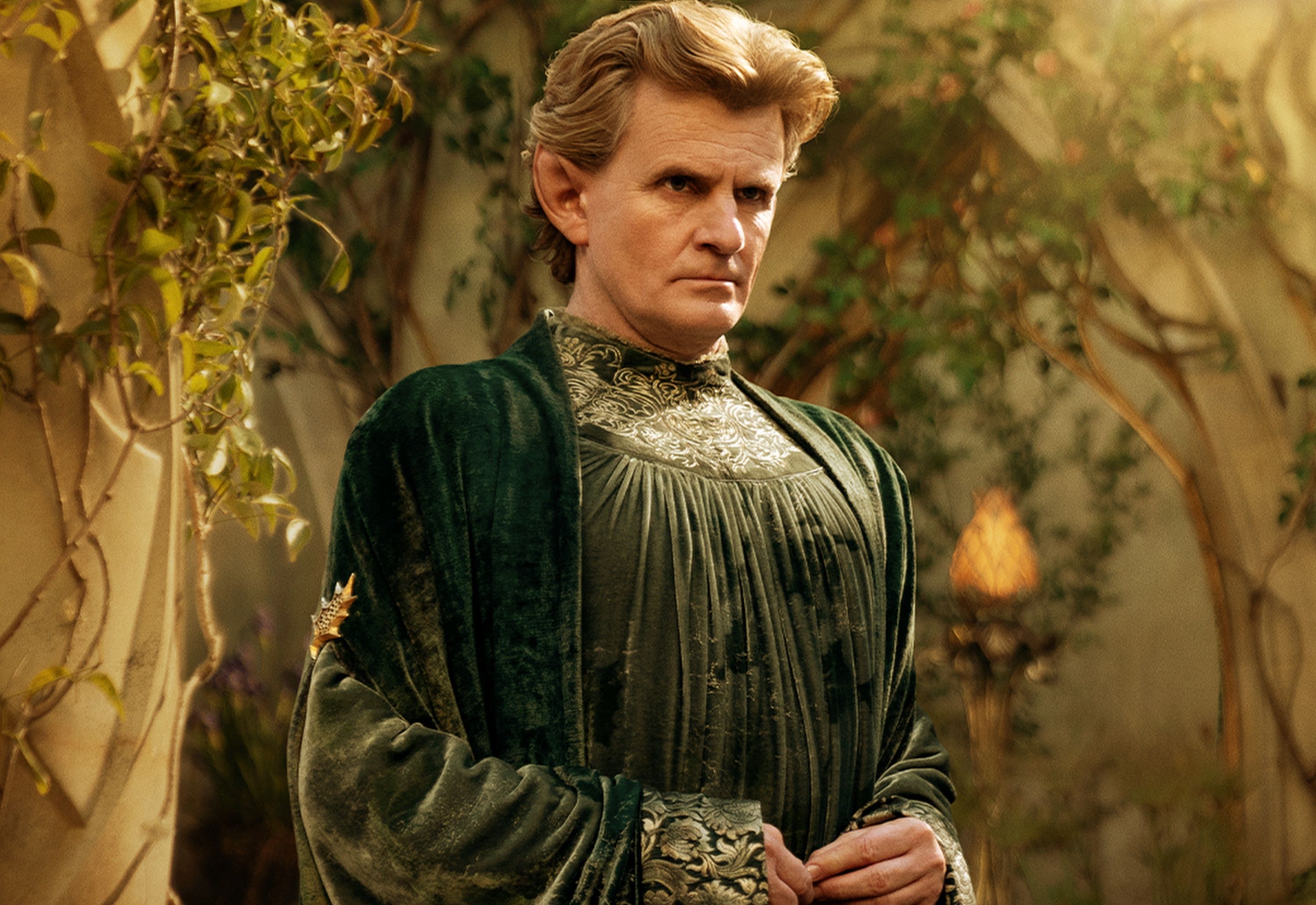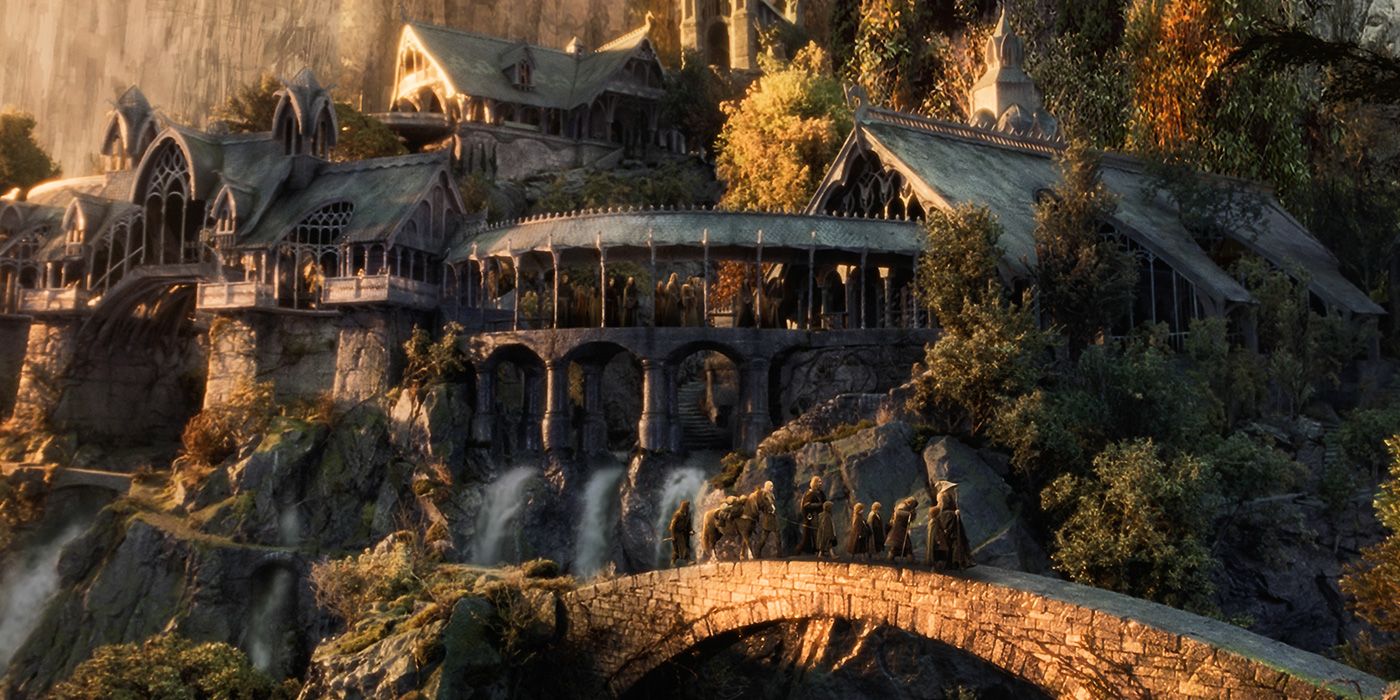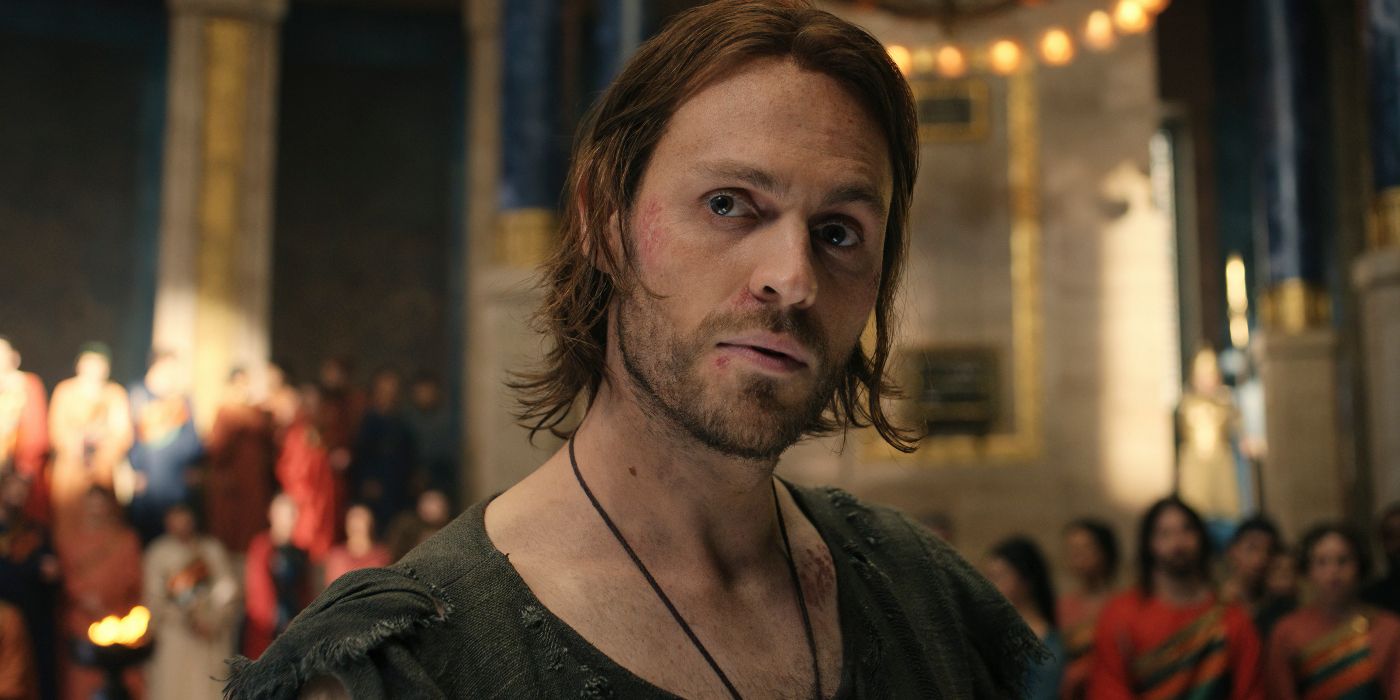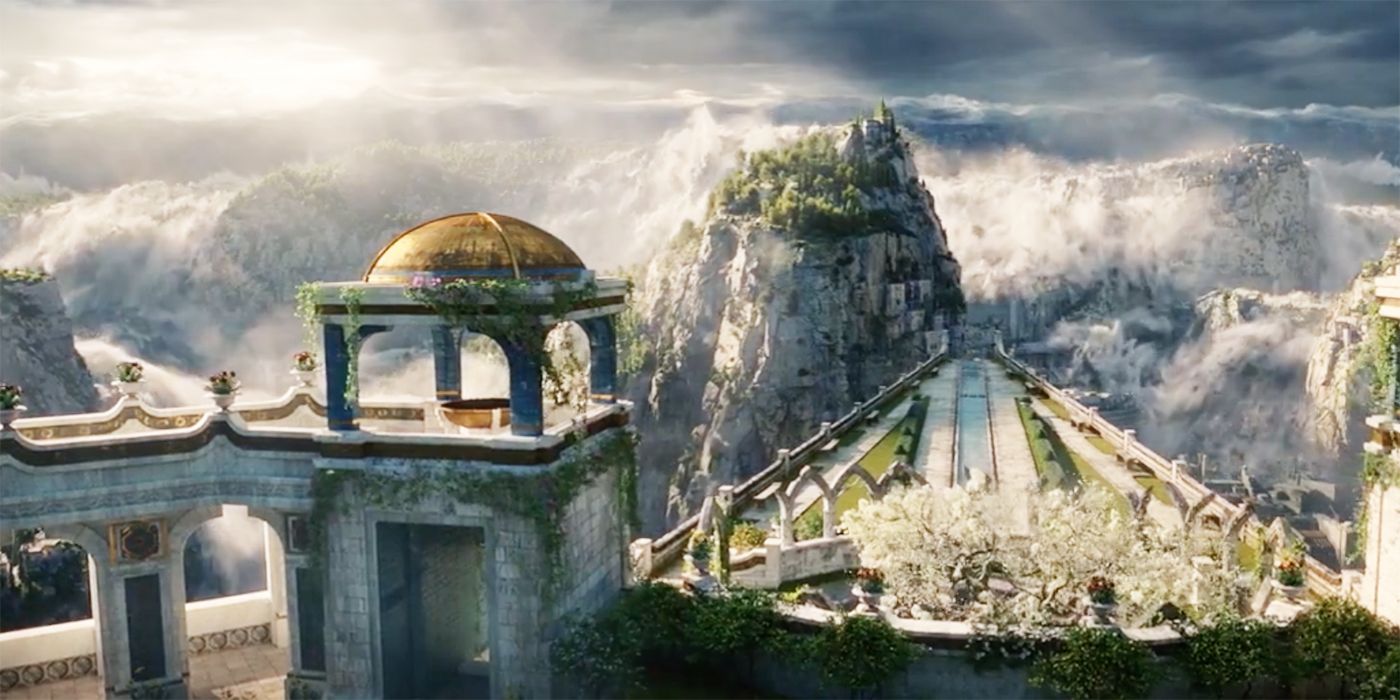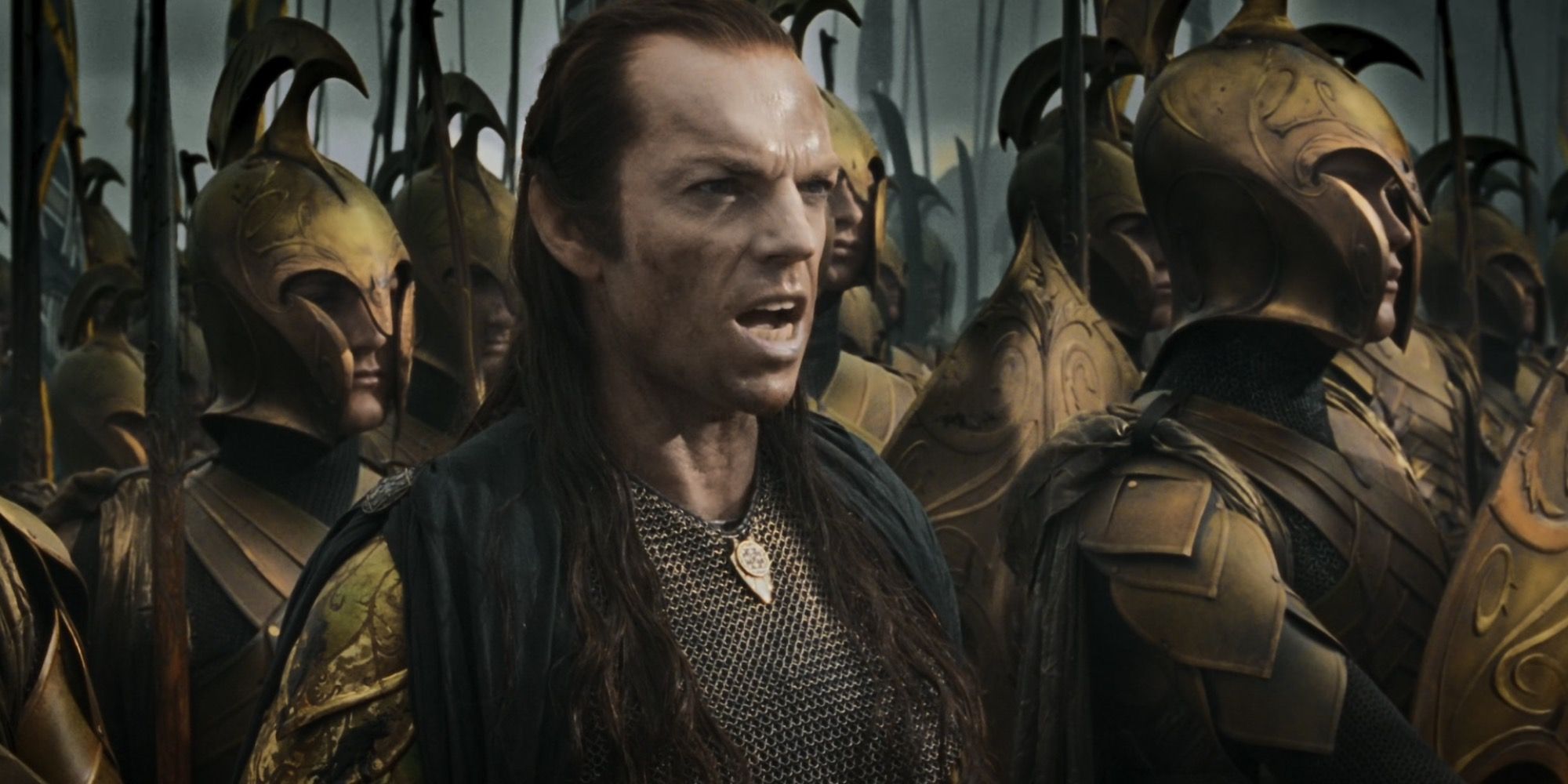With Season 1 of The Lord of the Rings: The Rings of Power in the books, the plotlines of the future seasons of the show have started taking shape: whether from hints and interviews or major events of the books, there are certain to be a handful of important moments and climactic episodes coming in future seasons. The series has certainly shown a tendency to tweak plotlines and invent some key elements out of whole cloth, but despite all of the creative detours of the show, there are established events from Tolkien’s histories that are bound to be explored in future episodes.
Some of these major events, moreover, are so significant and decisive that they will likely form the centerpiece of several season climaxes. Whether massive battles or destructive acts of hubris, some events are bound to come to the screen in subsequent seasons. So let’s take a look at things that were, things that are, and some things that have not yet come to pass.
The West Gate of Khazad-dûm
While one of the more important plot points in Season 1 was the discovery of mithril by the dwarves and the significance of its properties, audiences have likely only seen the beginning of its usefulness. Tolkien noted that during the Second Age, the relationship between the elves of Eregion and the dwarves of Khazad-dûm was the closest and most cooperative that there ever was between the two peoples. Not much of that has been seen so far, so the growth of this relationship is likely to be important in upcoming seasons.
One of the most important outgrowths of this relationship, however, was the eventual creation of the West Gate of Khazad-dûm. A collaboration between Celebrimbor (Charles Edwards) and the dwarf smith Narvi resulted in the specialized use of mithril to create the gate that appears in the Fellowship of the Ring film, invisible until it glows in the moonlight. The elvish script on the door was a testament to the friendship of the elves and dwarves at the time, and so it is likely to serve as a plot point in the near future of the series, both for its internal significance and for a useful connection for fans of the films.
The Return of Glorfindel
On the other hand, for fans of the books and extended works of Tolkien there is another aspect that the show has a golden opportunity to explore, where the films have fallen short: the reintroduction of Glorfindel. The elf Glorfindel had a role in The Lord of the Rings books, but was written out of Peter Jackson’s adaptations in favor of Arwen (Liv Tyler). He was, however, an elf who fought in the fall of the elven kingdom of Gondolin and died in battle against a balrog, but was reincarnated and sent back to Middle-earth Sometime in the Second Age. As he is one of the most interesting characters in Tolkien’s world, his return to Middle-earth could well be a part of the plotline of the next couple of seasons and he could end up playing a significant role in the events of the Second Age.
The Fall of Eregion
In what is likely to be part of the climax of Season 2, the Fall of Eregion combines all of the elements that should make for an epic and climactic battle sequence: Sauron assaults and eventually captures Eregion and torments Celebrimbor into giving up most of the Rings of Power, though he is able to keep the elven Rings hidden. Elrond (Robert Aramayo) is sent to relieve Eregion but is pushed back into a defensive position and only saved from complete destruction by the intervention of a troop of dwarves, and Sauron (Charlie Vickers) pushes on to threaten Lindon itself before a relief force of Numenoreans intervenes and saves the day. It is certainly more than enough drama for any climactic episode, and is likely to come sooner rather than later.
The Founding of Rivendell
One of the more significant events that happens in the course of the destruction of Eregion is Elrond’s retreat into a defensive position, as mentioned above. The place he retreated to, however, would become the seat of his authority and eventually his permanent home in Middle-earth. It was in his defense from the advance of Sauron that he founded Rivendell in the midst of a war, and it would become the Last Homely House (as well as a well-defended stronghold) in the years to come. It is yet another opportunity for the show to explore in its relationship to the books and the films, and Rivendell’s significance to the future of the Age virtually guarantees that its founding will be brought to screen soon.
The Capture of Sauron
Following the Númenorean victory, Sauron retreated, but he came to threaten Middle-earth yet again. Later on in the Second Age Sauron began pressuring the Númenorean colonies in the west of Middle-earth, and in response, Ar-Pharazôn (Trystan Gravelle), who by then had become king of Númenor, brought an army to the continent to take on Sauron. The armies of the Dark Lord were soundly defeated, and Ar-Pharazôn in triumph brought Sauron back to Númenor as a prisoner. The spectacular defeat of Sauron might be folded into the war in Eregion, as the series is condensing the timeline of the Second Age, but in either case the Númenorean defeat of Sauron should be a spectacle to see.
Fall of Numenor
Of course, bringing Sauron to Númenor, however, was not the smartest decision Ar-Pharazôn ever made. Once on the island, Sauron slowly corrupted the heart of the king specifically and the people more generally. This corrupting influence of Sauron eventually led to the Númenorean rejection of the Valar and the worship of Morgoth instead, culminating in Ar-Pharazôn making an ill-advised attempt to assault the Undying Lands in hopes of seizing immortality for himself. In so doing, he doomed Númenor, and the Great Wave (envisioned by Míriel in the show) came to sink the island kingdom beneath the sea. This is a finale that impacts the entire history of Middle-earth, and so is likely to be the capstone of Season 3 or 4, given the sequence of events suggested by Tolkien’s timeline.
The War of the Last Alliance
What will likely be the focus of the final season of the series will be the War of the Last Alliance, as the survivors of Númenor band together with the elves of Lindon and their other allies in an attempt to destroy Sauron once and for all. It should be a suitable ending to the character arcs of the earlier seasons, as Isildur (Maxim Baldry), Elendil (Lloyd Owen), Gil-galad (Benjamin Walker), Elrond, and many others unite in a war that ends on the slopes of mount doom with what should be one of the greatest duels in TV history if it is pulled off correctly. Gil-galad and Elendil taking on Sauron together should make for a tragic and dramatic send-off to the show when all is said and done.
Of course, there are many more moments that fans of the books and films are looking forward to and hoping for, but if the visuals offered by Season 1 are to be any measure, the major events of the storyline alone should make for some of the most breathtaking shots and sequences ever brought to the screen.

